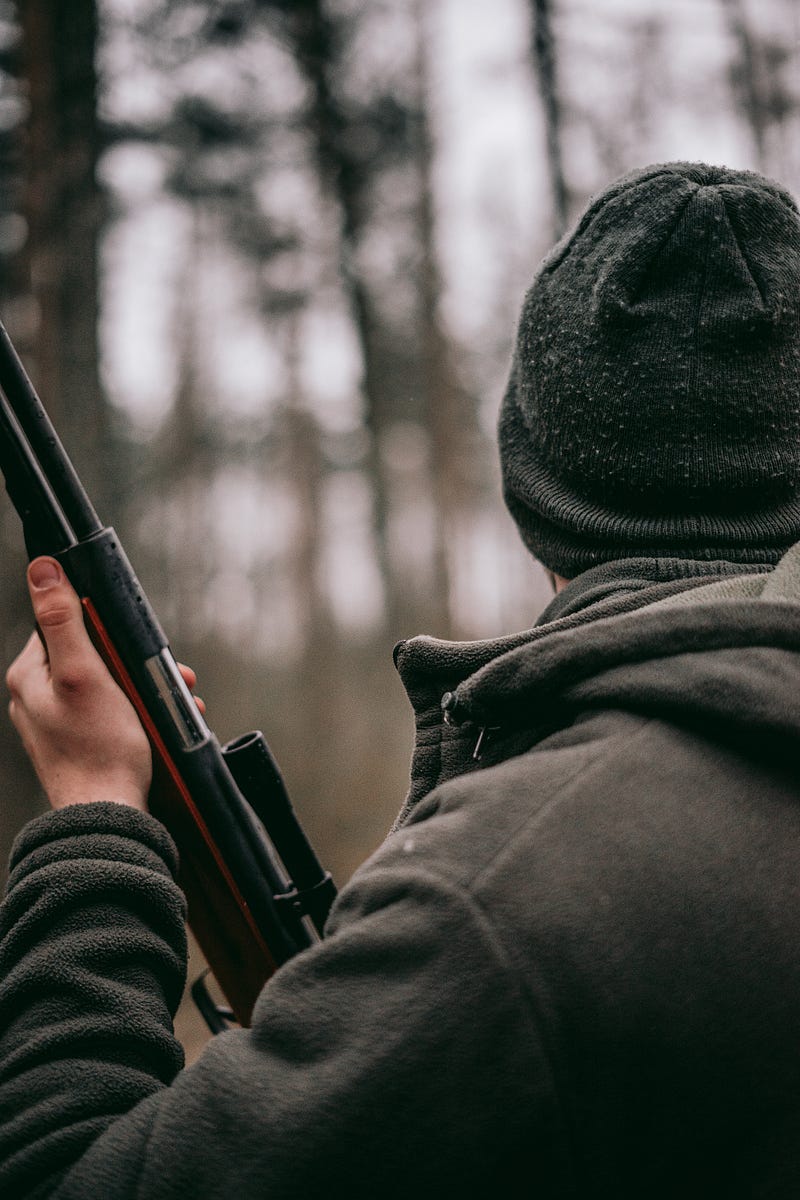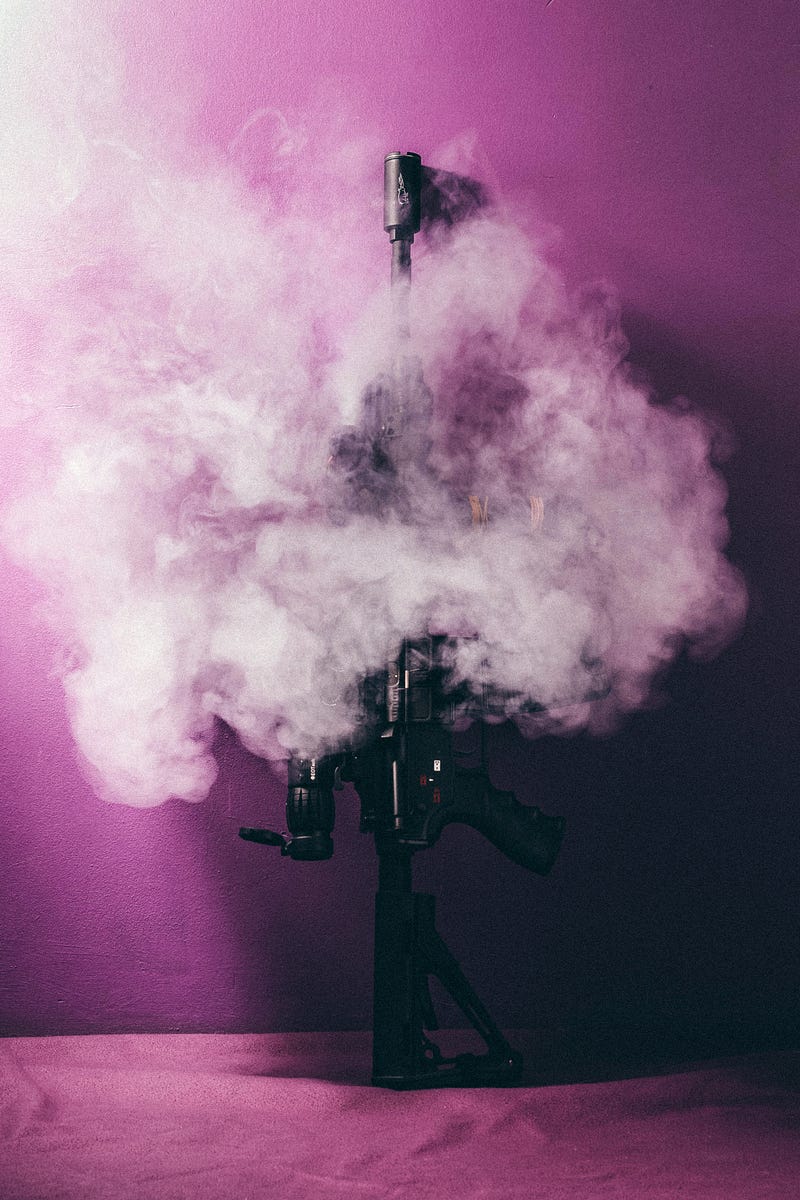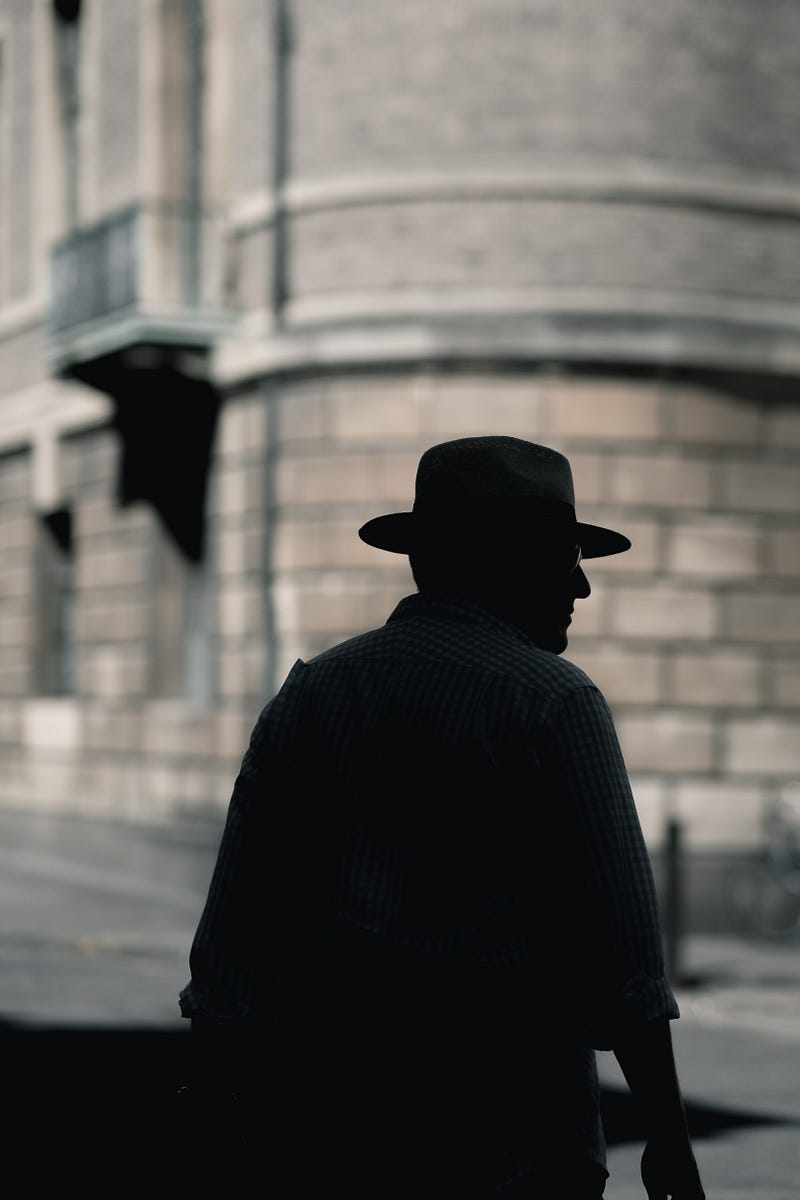The Lone Gunman
The Lone Gunman
The Mass Shooter as Culture Hero

There’s a lot of debate about gun control in the United States. However, both sides, by participating in the conversation at all, have a central confusion. The gun control debate isn’t (or at least shouldn’t be) about guns at all.
Gun control advocates and anti-gun-control advocates typically focus on the use of firearms in a very specific situation: when firearms are used in mass violence. The debate centers around mass shootings on one hand, and on the other hand, upon self-defense against a large group of targets. Regulation debates focus on automatic and semi-automatic weapons and large clips. This is strangely at odds with reality. After all, even a machine gun is significantly less effective at mowing down large numbers of targets than a bomb — or a car. The firearm is a weapon oddly unsuited to mass murder: even for semi-automatic weapons, the ideal use case is against a single easily identified stationary target from relatively far away. As a weapon, a gun is a great deal like a bow and arrow, although a gun can shoot farther with more accuracy and with greater force, and it’s faster to reload its projectiles. This should be enough to immediately reject both sides’ arguments from the perspective of materialism: any constraints placed on guns should be placed doubly or triply on automobiles, pressure cookers, fertilizer, boats, and weak poisons. The argument isn’t about guns as physical objects.

If the best analogy to the gun as a physical object is the crossbow, then the best analogy to the gun as a symbol is the katana. Physically, the katana is a very limited weapon: it’s a sword, long and heavy enough to take a great deal of effort to wield yet with clearly shorter range than a projectile weapon or even a spear or lance; created via a laborious process made necessary by the poor quality of Japanese iron deposits and the relatively primitive state of Japanese metalworking techniques, even katanas legendary for their high-quality steel would be laughed at by medieval European blacksmiths. Yet, because of the association between the katana and the samurai class (enforced by multi-century rules about who was allowed to own these weapons), the katana has incredible symbolic power. In an age where actual warfare in Japan was largely being performed by domestic copies of imported Portuguese flintlocks, a sword ban was instated to keep the samurai down. Even today, Japanese cinema is full of sword users, and invents magical techniques by which the sword might act as a ranged weapon. Despite its impracticality as an actual weapon, the katana has an incredible symbolic power to the Japanese (and to some westerners) that keeps it from being ignored. The katana represents a romanticized view of the samurai, and especially the ronin — in other words, it represents the image of a lone warrior who maintains his pride despite disgrace and whose power comes from intense training and self-discipline.
It is another such image that keeps the idea of the firearm relevant in a world where most actual warfare is performed by bombs of varying degrees of autonomy: the image of the lone gunman.
Let us examine the action hero. He is a middle-aged white man — never young, never black, never blonde or a red-head. He is very much like the standard FPS protagonist. He is muscular, poorly shaven, and is usually either ex-police or ex-military (although occasionally he is still affiliated, but not considered a part of the in-group). He works alone. He fights a large and organized force of well-equipped enemies; he does not do so out of some traditional defense of “justice” or “the law” (because he is too cynical to believe in such things) but instead for some intensely personal reason (usually to protect or avenge a family member, who is most often female). Even as the enemy uses bombs, noxious gasses, poisonous injections, throwing knives, or other weapons, our action hero protagonist uses firearms; to the extent that he uses any other weapon, he does so out of necessity, improvising, after he loses his gun or runs out of ammunition, and the weapon he improvises is almost never more destructive than a gun. (This is mirrored in samurai flicks, particularly in parodies — in the first episode of Gintama, the title character destroys a highly advanced alien-made nuclear weapon by hitting it with a wooden sword, having refused to accept a laser gun previously.) The action hero doesn’t plant bombs, although he may allow the enemy to be blown up by their own bombs; when encountering a piece of destructive machinery, even after defeating its operator, the action hero will not choose to use it, except perhaps as a transportation device, and any destructive effects of such a device will be accidental — our action hero won’t steal a tank, and although he might steal an attack helicopter he won’t use the helicopter’s bombs or machine guns.

Our gun control advocates fear the action hero to some degree; after all, the action hero works toward the goal of a safe society only incidentally. Our gun control advocates also fear those actual human beings who have been possessed by the action hero / lone gunman archetype: school shooters, right-wing terrorists, and corrupt cops. To some degree this is justified: while the action hero himself does not and cannot exist, those who have sublimated themselves into this archetype can do quite a lot of damage before their luck runs out. However, in another sense, this is foolish: the terrorist who packs a machine gun instead of a bomb is a bit like the man who tries to take on the army with a sword; he has confused symbolic strength with literal strength, and the limitations of his weapon will prevent him from doing nearly as much damage as he expects. In a sense, those who fear these groups should feel lucky that they suffer under the delusion that their weapon of choice is ideal; were they to replace their media consumption with proper training and think clearly about weapons as tools, they would be far more dangerous.
On the other hand, those who fear gun control identify strongly with the action hero, or at least believe that they could become his manifestation under the right circumstances. People who hoard guns against what they see as an oppressive government are operating on action movie logic: a small group of people with automatic weapons cannot even defend themselves against a national army, although a single con artist could probably decimate a national army with some poison and a great deal of courage.
The lone gunman, though he is often associated with the religious right’s reformulation of Randian Objectivism, in a sense is a stranger bedfellow with Objectivism than the religious right itself is. No Randian hero, the lone gunman is a loser who does not win, but instead causes others to lose. He never profits from his actions, nor does he intend to; he comes into the story already damaged and rejected by a world that he doesn’t fit into, and his goal is to save someone (usually a family member) from a threat that appears after the beginning of the narrative, or to take revenge for that threat. He plays only negative-sum games: his goal is to return to the same level of dysfunction he is used to, having caused harm to some third party (usually some variety of “foreign terrorist”). The family he rescues is one he is almost invariably estranged from, just as he invariably has a warped relationship with the career that gave him the training he uses: while usually a former soldier or police officer, if he happens to be a current officer he is a pariah.
I would place the beginning of the lone gunman figure in film with the release of Die Hard. The elements of Die Hard that were originally (in the style of the Last Action Hero) a satire or subversion of action movie tropes eventually became the defining traits that separate the lone gunman from older 80s-style action hero figures, and these traits are important to note: the lone gunman, though skilled, is not ‘fit’; rather than being a well-rounded person who happens to excel at violence, this figure is a loser and outsider who (in a strange warping of the hero’s journey) discovers that he has a talent for violence when he is thrust into a situation where he uses it. He may be an ex-police-officer, but he can fight off hundreds of current police officers who have better training. Much like how, out of context, the stories of popular detective characters appear to be about a person who supernaturally attracts criminal acts to happen around them, the lone gunman appears to attract swarms of unrelated attacks.

I would like to also distinguish the lone gunman figure from another star in our constellation of men of action, the hardboiled detective. While the hardboiled/noir protagonist appears to have much in common with the lone gunman — both are losers thrust into lives of violence to which they are unnaturally acclimated, within the matrix of a society they cannot integrate into — the hardboiled protagonist’s cynicism is always a put-on. A hardboiled protagonist, being a “shop-worn Galahad”, has more in common with the ronin figure or with the hero of westerns: he may pretend to have purely selfish and material reasons for his actions, but he acts according to a strict moral code he would rather not admit he adheres to. The cynicism and nihilism of the lone gunman figure is real, and in an inversion of the hardboiled protagonist, the lone gunman acts as if his behavior is justified by familial loyalty or revenge, when it is clear that revenge is just an excuse for immersing himself in a world of violence. Where all other action hero protagonists are acclimated to violence by necessity and are at least as estranged from violent exchange as they are from the rest of the social world, the lone gunman has a greater connection to violence than with the every-day. All other forms we have discussed are rejects who carry a set of moral guidelines from a world that no longer exists or is closed to them; the lone gunman has never had a home, but finds one in the process of taking revenge, and his moral sense is warped accordingly.
In other words, the lone gunman breaks from the tradition of justified violence, instead engaging in violence that justifies itself: loss for loss’s sake. Hardly sociopathic; this is instead the logic of a perpetually frustrated death wish. That this resonates with society is interesting but not impossible to predict: prescriptive codes of ethics, to the extent that they are narratively interesting, must be problematic (a hardboiled protagonist who will “never hit a woman” is foiled on several fronts, not least by wicked women who take advantage of him); furthermore, prescriptive codes of ethics also don’t age well, particularly now that widespread and fast communications across demographics have brought about a nearly scientific style of inspection of moral and ethical issues in the public sphere. An everyman whose abilities are unknown to him at the start, the lone gunman can become an aspirational figure for those who have no skills but suspect that they may discover that they too can mow down faceless waves of military police if given the opportunity. Finally, the lack of interiority in the lone gunman figure — the reliance on a supernatural luck, the lack of planning or aspirations, and the absence of intellectual rather than material challenges — is easily mistaken for unflappable cool: it is not that the lone gunman is unflappable out of some internal wellspring of strength, but instead because there is nothing inside him to flap.